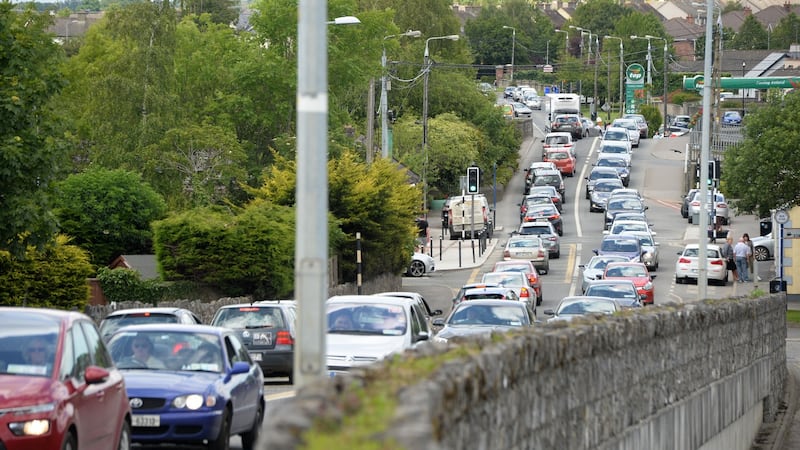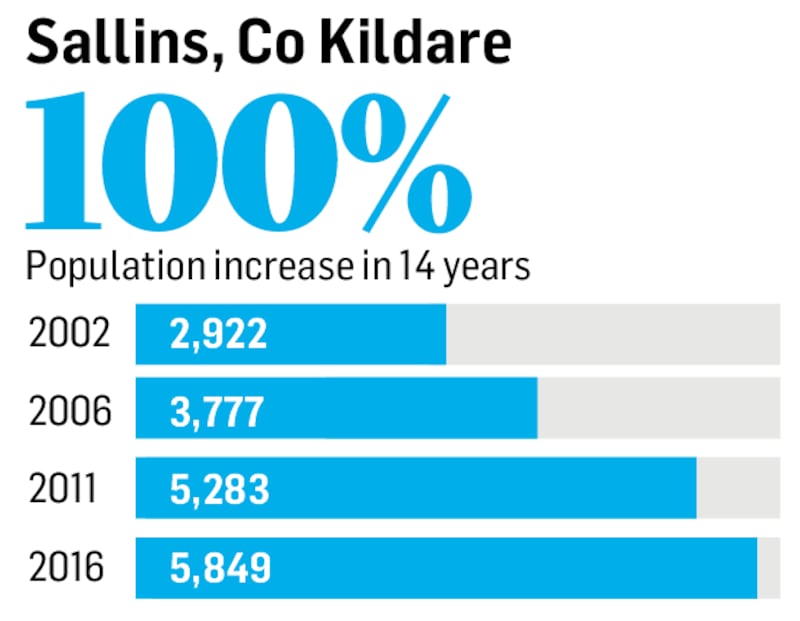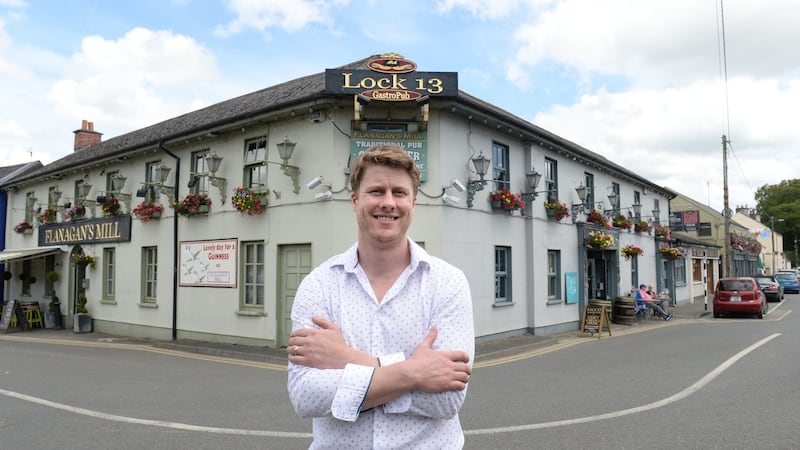In a series of articles, The Irish Times explores five challenges facing rural Ireland – diversity and migration; poverty; rapid growth; post-recession recovery; and depopulation – and ways to overcome them.
Ger Loughlin points to the homes of some of his neighbours in Sallins. "The person who lives there works in the Law Library. That one is in IT. That's a new arrival," he says, pointing to one particularly elaborate dwelling. "And so is that one."
We’re cruising down the Grand Canal on Loughlin’s barge. “You wouldn’t get a one-bed apartment in Sallins for €130,000 now, but it’ll get you a very nice barge,” he says.
The housing boom in Sallins – which ranked as Ireland’s most densely populated town outside Dublin in the 2011 census – has extended on to the canal, which is now home to up to 20 barges that are occupied year-round.
Loughlin moved on to dry land seven years ago, when his children began to outgrow living on the Róisín Dubh. Now he rents it out on Airbnb, mostly to couples down from Dublin for an overnight, and runs day trips up and down the canal on a second barge.

The population of Sallins exploded in recent times, doubling between 2002 and 2016 from just under 3,000 to almost 6,000. Not that you can tell on a visit during the daytime. While almost half the total population work, only 418 were in employment in the town itself in 2018. Sallins has the lowest density of jobs to workers in the country, with 86 per cent of the working population commuting to work. Almost 2,000 of them make the trip by car, with only 335 travelling by rail. Roughly one in three workers commutes to a job in Dublin.
The risk to any rapidly-expanding commuter town is that it will end up being devoured by Dublin, seen as a place people come to sleep when they can’t afford to live in the capital. And Sallins does have the feeling of a town still trying to work out exactly what it is.
Empty units
The areas on either side of the canal are beautiful but despite the heroic efforts of the Tidy Towns group, the main street, just a few steps away, feels under-utilised. Takeaways and hair salons take up most of the occupied units, alongside several empty shops.
Across the street is the former Odlums Flour Mill, which was bought a few years ago, but has not yet been developed. Then there’s the issue of through-traffic: Main Street is choked with traffic for most of the day I spend there, with large trucks rumbling across the bridge over the canal.

“When I was a boy in Kildare town, Sallins was a village surrounded by fields. It was always the younger brother of Naas,” says Barry Flanagan, who owns the Lock 13 gastropub and microbrewery on the canal. “Then there was the explosion of housing.”
His family owned a pub in Kildare, and Flanagan’s father decided to expand into Sallins when he saw a statistic back in 1995 that declared it the fastest growing village or town in Europe. “Since then, the population has grown year on year,” despite sewage problems in outlying estates that put a brake on development.
Business was great in the beginning and then, “when the recession hit, it was tumbleweed quiet”. But for the last five years or so, people have been spending again.
The first wave of commuters who came here in the 1990s “are old stock now,” says Flanagan. “Some of them call Sallins ‘Dublin 28’, and they want us to put the Dublin flag out for matches.”
‘All the changes’
But the growth hasn’t come without its issues. As is the case with other rapidly expanding commuter towns, the population came first, with the infrastructure and sense of community catching up later. “They just kept building more and more houses,” says Fergus Carpenter, a school principal and chair of Sallins Community Council since 2013.
“When you build lots of houses and put lots of people in them, but don’t actually plan for the infrastructure, that becomes a problem. We’re only getting a playground now. It’s been promised for about 10 or 12 years. It’s great to get it, but my kids are teenagers now.”
The GAA club has no problem attracting recruits or volunteers – “it’s bursting at the seams,” says Flanagan – but it doesn’t have enough space to host all its own matches. And the soccer club is on land rented from a developer, which will be at risk if there is a decision to build on it.

After campaigning by local community groups, 40 acres of land were recently purchased by the local authority to develop a long-awaited bypass for traffic coming off the M7. Of the 40 acres, 33 were set aside to be developed into a community park and centre. “They bought the land; but they haven’t done anything with it yet,” says Carpenter.
It’s a good example of what can happen when a community comes together, he adds. “In our case, there was a very small local community here, and you’re superimposing a load of Dubliners and others on to it. But we’ve integrated pretty well. I’ve never had the feeling of being a blow-in.”
Fianna Fail TD James Lawless has lived here for 17 years, “long enough to see all the changes”.
Growing community
For towns like Sallins and nearby Naas, Lawless says, “when we talk about them, it tends to be with a lot of nostalgia for how things used to be when there was a thriving town centre. But we can’t wind back the clock”.
For Sallins, it’s not so much out-of-town shopping that has hurt the main street, but convenience shopping, or commuters stopping on the way home to pick up a few things, instead of shopping locally.
“Going up the main street has become a chore. The way we solve this, I think, is to imagine our main streets differently, as a cultural centre, or a place to have a festival.” He believes the plans for a Grand Canal greenway through Sallins should help solve the issue of the empty units on Main Street.
At the start, says Nicola Curran Zammit, who opened the Michelin Bib Gourmand-winning Two Cooks restaurant in the town three years ago, “everyone said to us, why Sallins? They were kind of bamboozled. But we didn’t pick Sallins; Sallins kind of picked us.”
Business is booming, though one of the challenges of running “a neighbourhood restaurant in a commuter town” is that “midweek is quiet; weekends are crazy. You go from third gear to sixth gear overnight”.
“We see the process of people settling down here. We have young couples who come in once a week or once a month, and then she gets pregnant, and then we don’t see them at all for about six months. And then you start to see them around the town a lot more because she’s on maternity leave, and they suddenly get interested in the community. All those people who came just as commuters have their kids here, and put down roots, and the community grows from that.”
Additional reporting: Nora-Ide McAuliffe
Analysis
Fintan O’Toole: ‘Rural Ireland’ has been romanticised up to its neck
David McWilliams: We need to move public servants out of Dublin
Challenges facing rural Ireland’s needs centralised decision-making
Two-thirds of towns with 10,000 people are in Leinster
Immigration is as much a rural phenomenon as an urban one
The stark problem for Irish towns is simple: they need people








